Georg Baselitz: Springtime at Gagosian Gallery, NYC (24th Street)
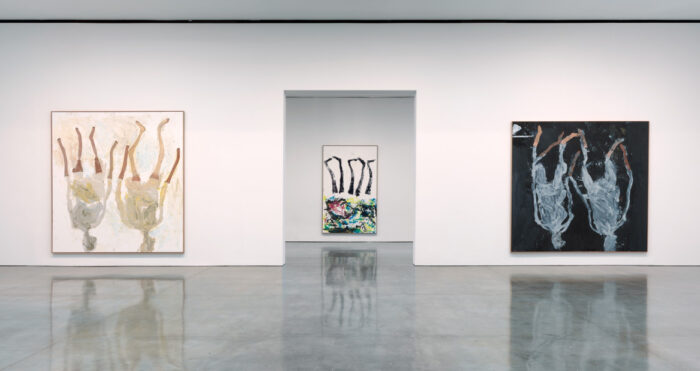

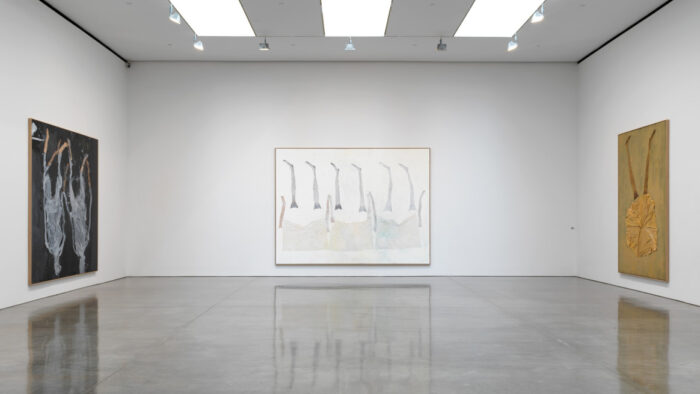
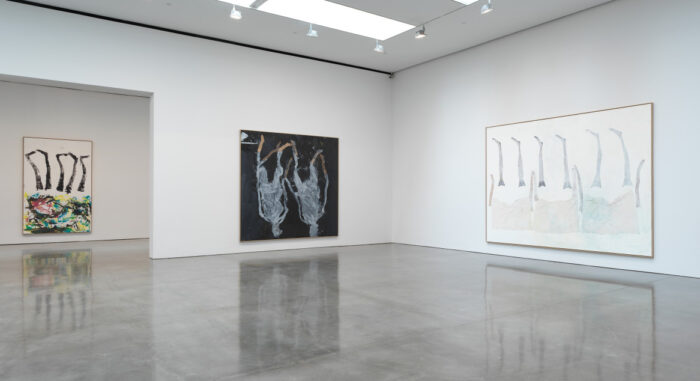

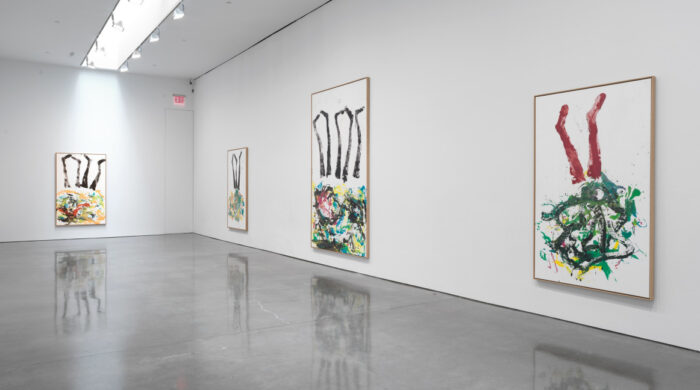
Georg Baselitz: Springtime at Gagosian Gallery (24th Street, NYC)
May 4–June 12, 2021
When I told a sculptor friend located upstate that I was going to review “Springtime,” the show of new work by Georg Baselitz, he wondered aloud whether the exhibition’s continuation of inverted paintings was in fact an ongoing gimmick, a trick that the artist has repeated since first painting his work upside down in the late 1960s. This might be successfully argued since the stratagem has been followed for more than half a century, but the deliberate deployment of a visual eccentricity might alleviate some of the exhaustion we find in the ongoing presentation of the portrait, a genre hundreds of years old. Indeed, over time Baselitz’s decision to reverse the upright position of his subjects has come to seem much more than a mere quirk; it offers an alternative to art historical precedents that today can seem more than a little moribund. This means, then, that Baselitz has moved into a light-hearted rejection of tradition–a view supported by the show’s title, which also refers to the time during which it has been exhibited. Likely as well, the work rejects a dark point of view at a time when, finally, the virus quarantine is lessening.
The paintings themselves involve usually dark stockings in the compositions’ upper register–a choice that is both erotic and decorative. As major collaged elements of the work, they stand-in for the female figure, whose torsos and heads do not occur in the paintings. Still, Baselitz makes reference to the female figure; in a number of the works, the bottom half is filled with highly colorful, expressionistically painted abstract versions of skirts: the equivalent of brightly hued, light clothing worn by women in warm weather. In Braun (2020), for example, the reddish-brown stockings reach toward the top of the painting; directly beneath them is an unconnected, messily executed mass of brushstrokes, mostly in green and black, roughly corresponding in shape to a dress. The combination of the stockings, actual objects collaged onto the canvas, along with the much more metaphorical use of the brush marks, results in an experience that is joyous and free.

Displaced Persons (2020), one of the strongest pieces in Baselitz’s show, is darker in timbre than most of the other works. The entire body of two full figures painted a ghostly white, occur on a black background. The bodies are very roughly painted, with the black background evident behind the thin coat of white paint, while at the top of the painting we see both narrow legs and extremely thin arms ending in tannish-brown stockings–in between the two figures, one arm of each share a single piece of nylon. Like a lot of the work in the show, Displaced Persons is deliberately messy–a rejection of conformist constraint. Baselitz presents here the effects of the expressionist spectrum, which is based on caricature as much as it follows traditional realism. The joyousness of the artist’s project is in this show made clear, here and throughout the exhibition.
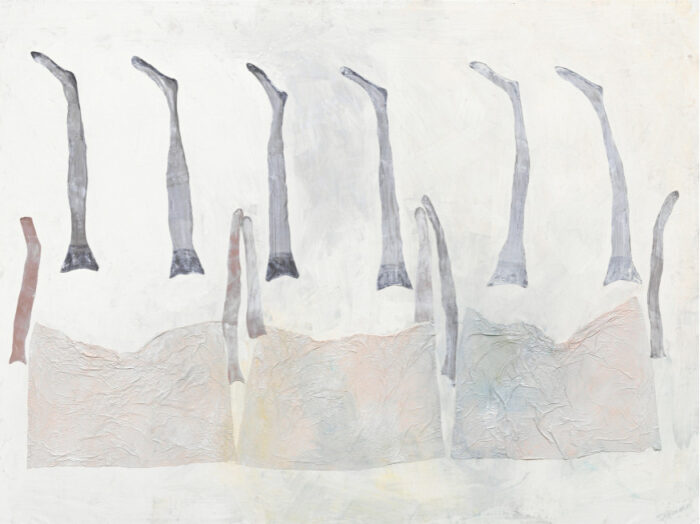
The three figures in Spaziergang am Meer (2021) involve three pairs of black stockings hovering above pillow-like squares of off-white fabric. The figure’s arms, which reach upward as far as the middle of the stockings also end in stockings. The hosiery is covered with a very light coat of white, allowing the article of clothing’s dark color to be seen. Here the overall effect of the composition is as abstract as it is figurative. This is largely achieved by inverting the figures, but the distancing of the painting from traditional figuration is also accomplished by Baselitz’s decision to forego the head–a choice evident from work to work. The artist is celebrating a joyous season, a time of renewal after winter, but he also is re-embarking on a project of original content, in which the German expressionist tradition is reinvented to keep it energetic, alive. The results are charming–and highly original.

it’s interesting that your friend was only commenting on Baselit’z signature inversion, and not this: “Georg Baselitz Makes Disgraceful Sexist Remarks on Women Painters, Again. Female artists lack ambition, he said. … “Even though the painting classes in art academies are more than 90% made up by women, it’s a fact that very few of them succeed. It’s nothing to do with education, or chances, or male gallery owners.”